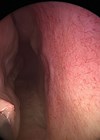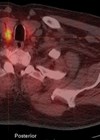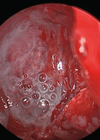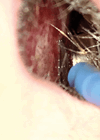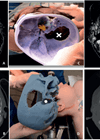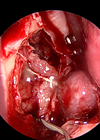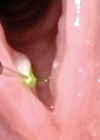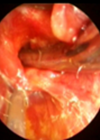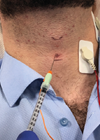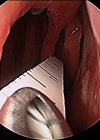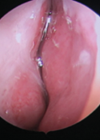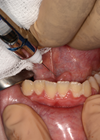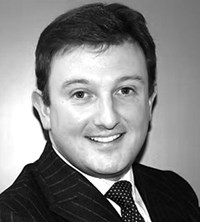How I Do It
Bipolar microdebrider turbinoplasty
There are a variety of ways to reduce the bulk of hypertrophied turbinates. Kimberley Lau and Showkat Mirza describe their technique which can be used in difficult cases and with minimal morbidity. As ever, one aim should be to avoid...
Targeted focal parathyroidectomy
Leanne Hamilton and Louise Clark describe their technique for helping to localise parathyoid adenomas. Surgically this can be difficult, so careful preoperative evaluation using imaging as described can help minimise difficulties intraoperatively when identifying the parathyroid adenoma. Preoperative imaging has...
Endoscopic CSF leak repair using nasoseptal flap
Many of us during training or in established practice will have encountered the complication of anterior skull base CSF leak. This can be a challenging problem to deal with and in this article the authors describe their favoured approach. Cerebrospinal...
Nasal and aural foreign body removal: another technique for a common problem
Trying to remove foreign bodies from the ears and noses of children is something we have all struggled with at various times. Many people have their own top tips, and here Oliver McLaren and Alexander Walkden describe an ingenious way...
The utilisation of three-dimensional printed models in skull base surgery
As technology improves, there are new ways to assist with surgeons when it comes to training and preparing for surgery. Barbara Anne Thomson and Georgios Kontorinis highlight how 3D printing can help with the understanding and surgical planning for complex...
Endoscopic DCR
In this interesting article, our experienced colleagues describe their favoured technique for performing endoscopic DCR and share with us the key steps for a successful outcome. Dacrocystorhinostomy (DCR) was historically performed by ophthalmologists for nasolacrimal obstruction using external techniques. The...
Recurrent respiratory papilloma treatment in the office
In this interesting new article, Markus Hess and Susanne Fleischer describe their technique for managing recurrent laryngeal papillomatosis in an outpatient setting using channelled endoscopes. The recurrent respiratory papillomatosis (RRP) of the larynx is a chronic HPV-associated viral disease. Clinical...
Endoscopic arytenoid abduction lateropexy for bilateral vocal cord paralysis in neonates
We are delighted to publish a further update on the use of the technique for vocal fold lateralisation in neonates from Laszlo Rovo and Shahram Madani, who have previously informed us of this new technique [1]. These cases are rare...
Botulinum toxin injection in spasmodic dysphonia
Spasmodic dysphonia is a rare neurological voice disorder, which is often missed by the inexperienced ear. There is no laboratory test or investigation to diagnose this condition therefore, it is best diagnosed by listening to the patient’s voice. Laryngeal endoscopy...
Nasal septal perforation repair
Nasal septal perforation repair has traditionally been a great challenge. Many surgical techniques are described, however the success rate of closure has often been poor. Experience from the use of pedicled vascularised mucosal flaps in skull base surgery has been...
A quick and simple approach to correcting the deviated nasal septum
Nasal septal surgery is a very common procedure that we tend to learn as junior trainees. Most of us still find that we have a lot to learn with every deviated septum that we encounter. There is a range of...
Salivary duct clipping for drooling
Drooling can be a challenging problem to manage in paediatric ENT. The variety of medical and surgical treatments suggests that there is no gold standard treatment. Nicola Stobbs and Ravi Thevasagayam describe an approach to ligating the salivary ducts. Drooling...


